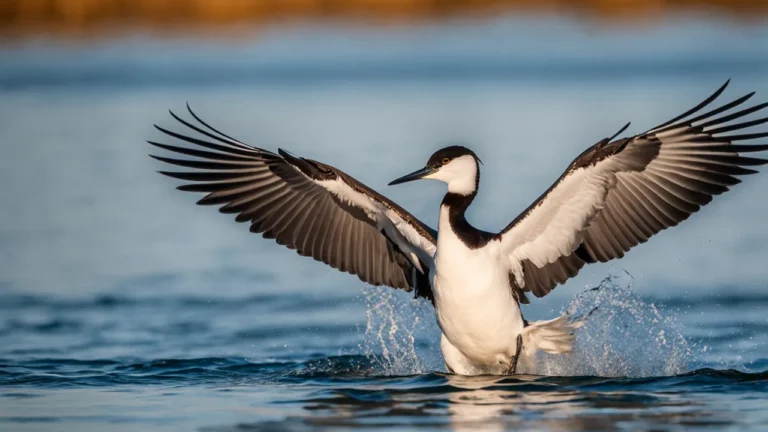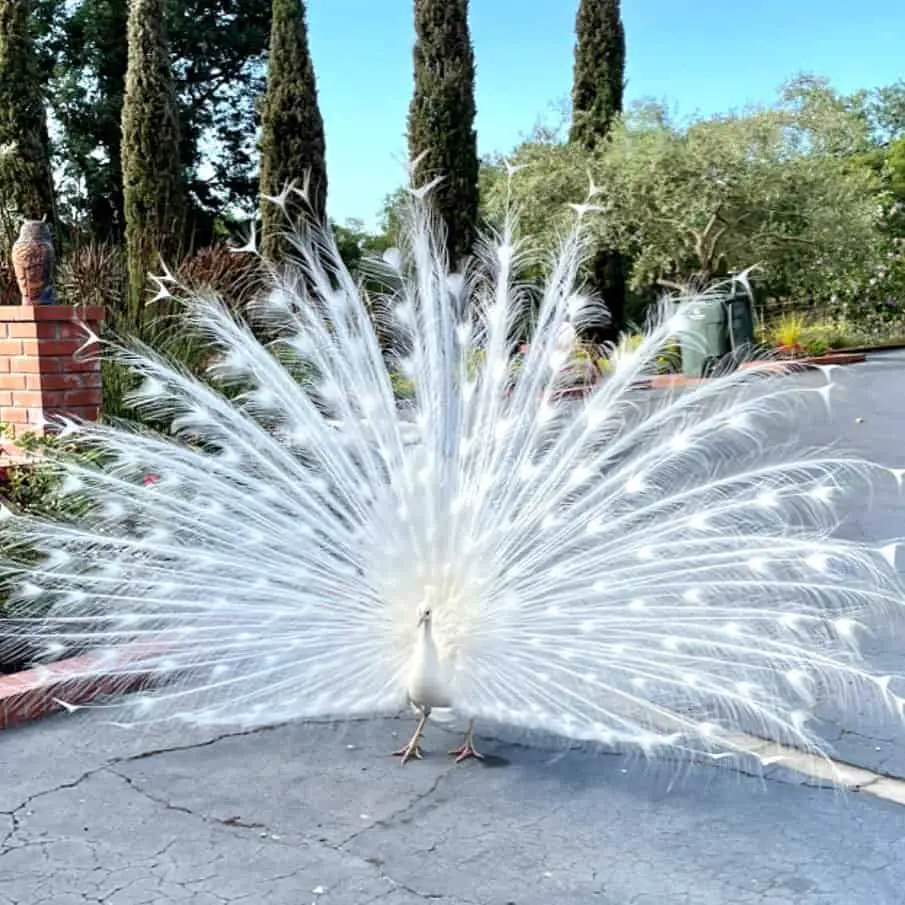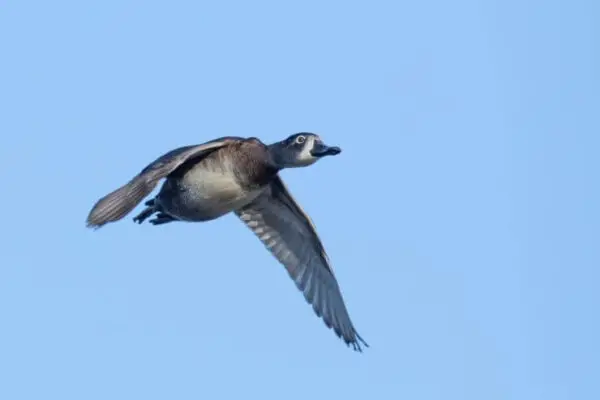People have been awestruck by birds plunging elegantly into water for millennia. In a nutshell, seabirds, ducks, kingfishers, and some raptors are the primary bird species that are recognized for their tendency to dive into the water.
Everything you need to know about diving birds will be covered in this extensive book, including how they enter the water, why they do so, and what they seek for once they are underwater.
This comprehensive post will go over the numerous bird species that have evolved to be proficient divers, how their bodies are made to do so, the various ways they enter the water, and the reasons they dive, such as to capture prey or avoid predators.
We’ll also talk about some of the most prevalent diving birds in the globe and provide fascinating information about their amazing diving prowess.
Bird Species Capable of Diving Underwater
Numerous bird species are well-known for their remarkable diving prowess. These birds can dive into the water to find food or to flee from predators because they have developed unique adaptations. Let’s examine a few of these intriguing bird species in more detail.
Seabirds
A large percentage of the lives of a varied group of birds known as seabirds are spent at sea. Many seabirds are proficient divers, including pelicans, gannets, and terns. Their large, thin wings and streamlined bodies let them to dive into the water with remarkable speed and accuracy.
These birds dive headfirst into the water, often from amazing heights, after using their excellent vision to identify fish swimming close to the surface. It is very amazing to see seabirds perform their plunge diving technique.
Ducks
Ducks, geese, and swans are among the waterfowl, which are another group of birds that have excellent diving skills. Although their primary characteristic is their ability to swim on the water’s surface, several species of waterfowl can also dive in order to find food.
The common merganser, for instance, is a diving duck that can hunt fish by submerging itself for up to a minute. These birds are effective hunters in aquatic situations because of their unique beak and webbed feet, which enable them to travel underwater.
Kingfishers
Kingfishers are renowned for their extraordinary diving prowess. These little, vibrant birds have an unusual method of hunting: they perch on a branch or wire that looks out over bodies of water, like lakes or rivers, and when they see a fish, they plunge right into the water.
Kingfishers can precisely take fish out of the water because to their long, pointed beaks. They are fierce hunters in their aquatic environments because of their extreme agility and ability to reverse direction quickly when in the air.
Raptors
Certain raptors, like eagles and hawks, can dive into the water, but most of them are best renowned for their aerial hunting skills. One of the best examples is the osprey, sometimes called the fish hawk.
These birds have developed unique adaptations to help them grasp slippery fish underwater, such as reversible outer toes and sharp, prickly scales on their feet. Hovering just over the water, ospreys often dive in headfirst and emerge with a securely grabbed fish in their talons.
Changes That Make Diving Possible
Numerous birds have developed amazing modifications that make it easy for them to dive into the water. These adaptations include a range of anatomical and physiological features, enabling them to be very successful in their underwater hunting pursuits. Let’s examine some of these adaptations in more detail.
Sleek Forms
The streamlined bodies of diving birds are one of their most important adaptations. When these birds dive into the water, their long, torpedo-shaped bodies reduce drag. They can travel quickly through the water because to their streamlined form, which gives them the agility to capture their prey.
Certain species, including the Common Loon and the Atlantic Puffin, are recognized for having streamlined bodies that enable them to dive with great skill.
Vision Modifications
Additionally, diving birds have developed eyesight modifications that help them find food underwater. Their eyes can concentrate on both close and distant objects with remarkable speed and agility in response to changes in light. They can now see fish and other prey that is hidden under the water’s surface thanks to this.
Furthermore, while diving, birds of prey such as ospreys have an additional set of eyelids known as nictitating membranes that shield their eyes and help them maintain concentration on their prey.
Waterproofing with Feather
An important component of a bird’s ability to dive into the water is its feathers. The feathers of these diving birds are specially designed and packed firmly, with waterproof oils applied to them. Because of this waterproofing, the feathers are kept from becoming too wet, which would make it harder for them to fly and remain buoyant.
For example, penguins are well-known for having thick, waterproof feathers that enable them to submerge themselves for lengthy periods of time and dive to very deep depths.
Modifications to the Leg and Foot
The alteration of their feet and legs is another significant adaptation for diving birds. Many diving birds have webbed feet that function as paddles to effectively move them through the water. With its increased surface area, this webbing gives each stroke extra thrust.
Furthermore, several species have unique hind toes that are positioned farther back on their feet, like the Northern Gannet. Similar to a rudder, this configuration aids in underwater steering and maneuvering.
Techniques for Diving
Water-diving birds have developed a variety of strategies to capture prey and survive in their watery habitats. Depending on the behavior and approach of the bird, these diving tactics may be divided into many categories.
Diving In Deep
One of the most popular diving methods utilized by avian predators like gannets and pelicans is plunge diving. Upon seeing their food from above, these birds plunge immediately into the water, utilizing their powerful wings and sleek bodies to help them descend into the depths.
They may dive further and capture fish that are swimming under the surface of the water by using a plunge diver.
Scuba Diving from Above
Certain birds, such as ospreys, are renowned for their skill in aerial diving. These birds search for fish by hovering above the water. They dive into the water with their feet first in an attempt to capture their prey.
The osprey’s unique toes allow it to securely grasp fish, guaranteeing a successful capture. Because the bird must precisely determine the position and depth of the water before diving, aerial diving demands dexterity and accuracy.
Go After Diving
Birds like the Common Loon use a technique called pursuit diving. These birds use their powerful legs and webbed feet to push themselves forward as they swim on the water’s surface. They use their wings to help them fly through the water as they dive under the surface to pursue fish they see.
Swimming and diving abilities are needed for pursuit diving as the bird must swim after its target and navigate underwater to capture it.
Strolling/Sailing Dives
Certain birds, such as the Pied Kingfisher, have evolved to walk or float on the water’s surface in order to capture prey. These birds search for fish by hovering above the water. They plunge into the water headfirst and use their beaks to capture the fish as soon as they find their victim.
Though less prevalent among diving birds, walking/floating dives are nevertheless useful for birds who live in shallow waters or like to capture food close to the surface of the water.
Seeing the many diving strategies used by birds to live and prosper in their watery environments is intriguing. Because of these changes, they are now proficient hunters that use their physical characteristics and innate abilities to capture their prey underwater.
Motives behind Diving
There are many different reasons why birds dive into the sea. These birds have developed special skills to traverse underwater situations, whether they are feeding, avoiding predators, preening, or just having fun. Let’s examine each of these explanations in further depth:
Gathering
Loons and cormorants are examples of diving birds that enter the water to get their food. These birds can go underwater in pursuit of fish, crabs, and other aquatic life because to their strong wings and streamlined bodies.
Through diving, they may reach food sources inaccessible to birds that only graze on the surface. Some diving birds have been known to descend as far as 200 feet or more!
Getting Away from Predators
When threatened by predators, diving into the water is a useful escape tactic for several birds. One benefit of diving birds is their ability to swiftly immerse themselves underwater, making it harder for their pursuers to capture them while they are being followed by predators such as terrestrial predators or birds of prey.
They have a protective coating that might potentially save their lives thanks to their abilities to swim and dive.
Getting ready
Preening is another reason why birds dive into the water. Preening plays a crucial role in a bird’s grooming regimen as it keeps its feathers in good shape. Ducks and swans are examples of aquatic birds that often dive into the water to moisten their feathers prior to preening.
Feathers that have been wetted will find it simpler to align and clean each individual feather, eliminating any accumulated oils, dirt, or parasites.
Just for Fun
It may surprise you to learn that some birds dive into the water just for fun. For instance, consider the Atlantic puffin. One of the numerous ways these little birds display their joy is by diving into the water. They are well-known for their lively nature.
Playing in the water lets these birds show off their natural tendencies and enjoy their aquatic home, even if it may not have a precise function like feeding or avoiding predators.
Diving birds have amazing skills that enable them to traverse underwater habitats, whether they are feeding, avoiding predators, preening, or playing. They are an interesting group of birds to study and enjoy because of their distinctive habits and adaptations.
Famous Birds of Diving Around the World
There are a number of noteworthy species of water-diving birds found all over the globe. These birds have evolved special traits that enable them to dive and swim underwater in quest of food. They have also adapted to an aquatic existence.
Let’s examine some of these amazing diving birds in more detail.
Gannets
Large seabirds called gannets are renowned for their amazing diving skills. These birds have the ability to dive into the ocean at up to 60 miles per hour from enormous heights. Gannets are sleek animals with large wings that allow them to dive to a depth of around 30 meters in pursuit of prey.
Their excellent vision enables them to identify their prey from above the water’s surface.
Cormorants
Another category of diving birds that may be found all around the globe are cormorants. These birds can remain underwater for long periods of time because of their thick, waterproof feathers. Because of their powerful legs and webbed feet, cormorants can dive up to 45 meters deep and are outstanding swimmers.
They grab fish with their keen beaks and consume them whole.
Loons
Usually found in freshwater lakes and ponds, loons are diving birds. These birds are adept underwater hunters because to their powerful legs and keen, pointed beaks. Loons are capable of diving up to 80 meters and remaining underwater for several minutes.
They are mostly fish eaters and move through the water with the help of their strong wings.
Penguins
Probably the most well-known diving birds are penguins, which are mostly found in the Southern Hemisphere. These birds, which lack wings, have evolved to live in the water and can swim rather well. In pursuit of fish and krill, penguins have the ability to descend to a maximum depth of 100 meters.
They can easily traverse through the water because to their streamlined bodies and wings that resemble flippers.
The Pelicans
Large aquatic birds with recognizable pouches are called pelicans. They dive shallow to capture fish close to the water’s surface, but they are not specialist divers like some other birds on this list.
Pelicans use their power to shock and capture their prey as they dive into the water from a height. After that, they transfer the fish into their swollen pouches and devour them whole.
Auks
The diving birds known as auks are comprised of razorbills, murres, and puffins. Because of their small wings, these birds have great swimming abilities. Auks have the ability to dive down 60 meters below the surface and move through the water on their wings.
They are renowned for their speed and agility in the water, and their main food sources are fish and crustaceans.
Herons
Although wading is the primary characteristic of herons, many species also engage in diving activities. These birds capture fish and other aquatic prey using their long legs and keen beaks. To capture their food, herons may descend from a low altitude or jump into the water from above.
They are adept hunters in the water as well as the air.
Ospreys
Ospreys are unusual predators because they can plunge into the sea to capture fish. They can pluck fish off the water’s surface thanks to their bent beaks and keen talons. To catch their food, ospreys have the ability to hover above the water and then dive in feet first.
They are expert divers who have the ability to capture fish up to two pounds in weight.
Final Thoughts
The ability of diving birds to enter the water and grab prey or avoid predators never fails to astound. The marvels of evolution and adaptability are shown by their unique bodies and methods. We hope that this in-depth exploration gave you a thorough understanding of the world of birds that live below the surface.
Your respect for a bird’s ability will grow the next time you see one delicately diving into a lake or sea.
In conclusion, several species of raptors, ducks, kingfishers, and seabirds have evolved powerful legs and waterproof feathers to enable them to dive into the water. They dive from the surface or leap from the air using a variety of ways.
Not only does diving help them hunt more effectively, but it also keeps their feathers preened and lets them to flee from predators. When you see a bird vanishing under the waves, remember how beautiful it is when form and function come together.






Perfect work you have done, this web site is really cool with excellent info .